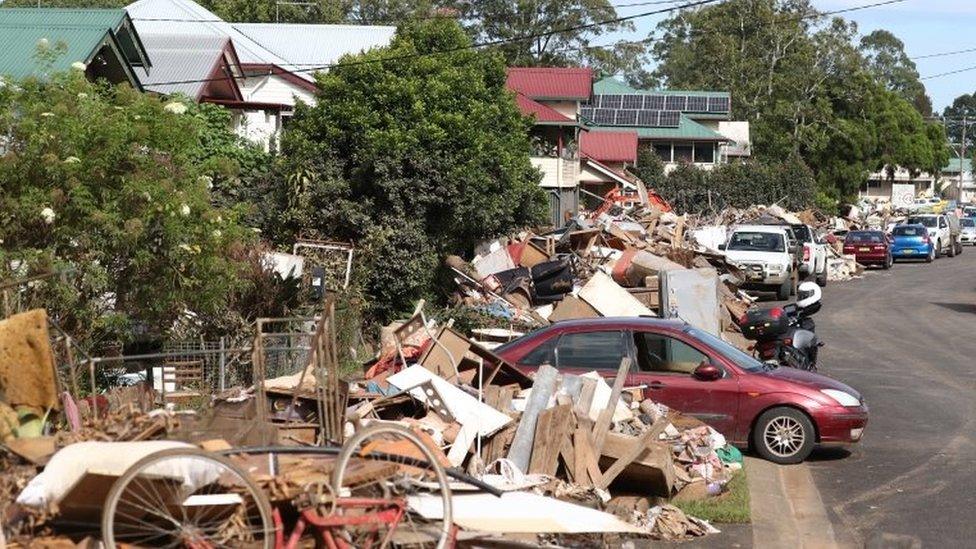Australia floods: PM Morrison to declare a national emergency
- Published
Watch footage of New South Wales floods in the past two weeks
Australian PM Scott Morrison says he will declare a national emergency over flooding in two states.
The disaster in New South Wales (NSW) and Queensland has killed 20 people and inundated thousands of homes in the past two weeks, after record rains.
Federal and state governments have faced anger for not acting faster to help residents.
Mr Morrison's declaration - a national first - will allow federal authorities to intervene more directly.
He made the announcement on Wednesday in the town of Lismore, saying it had endured a "once in a 500-year event". Four people died in flooding there last week.
"What has been seen here is nothing more than heart-breaking. You have to see it, you have to smell it, you have to feel it," he said.
The national emergency powers were established after Australia's 2019-20 bushfires and aim to "cut through any red tape" to deliver services and support, the prime minister said.
He said flood-hit locals and businesses would be able to access additional relief payments. Australian Defence Force soldiers can also be more widely deployed to mop up towns.
But Mr Morrison faced a hostile welcome from some locals and climate campaigners.

Scott Morrison was met by protesters on his visit to Lismore
In some communities, rescue efforts have largely relied on volunteers rather than authorities, and many people have been forced to live in temporary accommodation or cars.
"We were stranded on a roof for 16 hours in the rain with a two-year-old child and seven adults. Emergency services were so overwhelmed we just couldn't get through," one local, Stacey Gordon, told the ABC last week, external.
While waters have receded in some areas, there are still major flood alerts for places north of Sydney. The city experienced widespread flash-flooding on Tuesday.
To become official, the national emergency needs to be signed off by state premiers and the country's governor general, which Mr Morrison said should happen by Friday.

Clearing debris from Lismore will take weeks, the prime minister said
Experts say the flooding emergency has been worsened by climate change and a La Niña weather phenomenon.
A La Niña develops when strong winds blow the warm surface waters of the Pacific away from South America and towards Indonesia. In their place, colder waters come up to the surface. In Australia, a La Niña increases the likelihood of rain, cyclones and cooler daytime temperatures.
- Published9 March 2022
